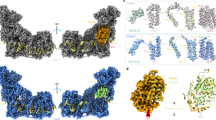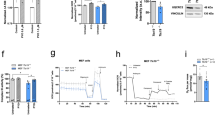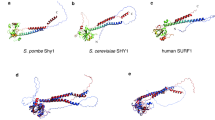Abstract
HIGHLY active preparations of mitochondria have been obtained from the spadix of Arum maculatum 1. These exhibited the ability to oxidize acids of the Krebs's cycle and pyruvic acid in their presence. No carrier needed to be added and the terminal oxidase responsible for the oxidations was not identified. The respiration of slices of spadix is not inhibited by cyanide2, even though it is very rapid, with QO 2 rising to 31.8. As mitochondria are generally supposed to promote respiratory oxidations through their contained cytochromes, the reaction of these aroid mitochondria to cyanide is of obvious interest.
This is a preview of subscription content, access via your institution
Access options
Subscribe to this journal
Receive 51 print issues and online access
$199.00 per year
only $3.90 per issue
Buy this article
- Purchase on SpringerLink
- Instant access to full article PDF
Prices may be subject to local taxes which are calculated during checkout
Similar content being viewed by others
References
Hackett, D. P., and Simon, E. W., Nature, 173, 162 (1954).
James, W. O., and Beevers, H., New Phytol., 49, 353 (1950).
Elliott, D. C., J. Exp. Bot. (in the press).
Author information
Authors and Affiliations
Rights and permissions
About this article
Cite this article
JAMES, W., ELLIOTT, D. Cyanide-resistant Mitochondria from the Spadix of an Arum . Nature 175, 89 (1955). https://doi.org/10.1038/175089a0
Issue date:
DOI: https://doi.org/10.1038/175089a0
This article is cited by
-
Cyanide-insensitive respiration of Candida lipolytica
Antonie van Leeuwenhoek (1974)
-
Dünnschichtchromatographic der Dicarbonsäuren
Fresenius' Zeitschrift für analytische Chemie (1962)
-
Respiration III
The Botanical Review (1960)



